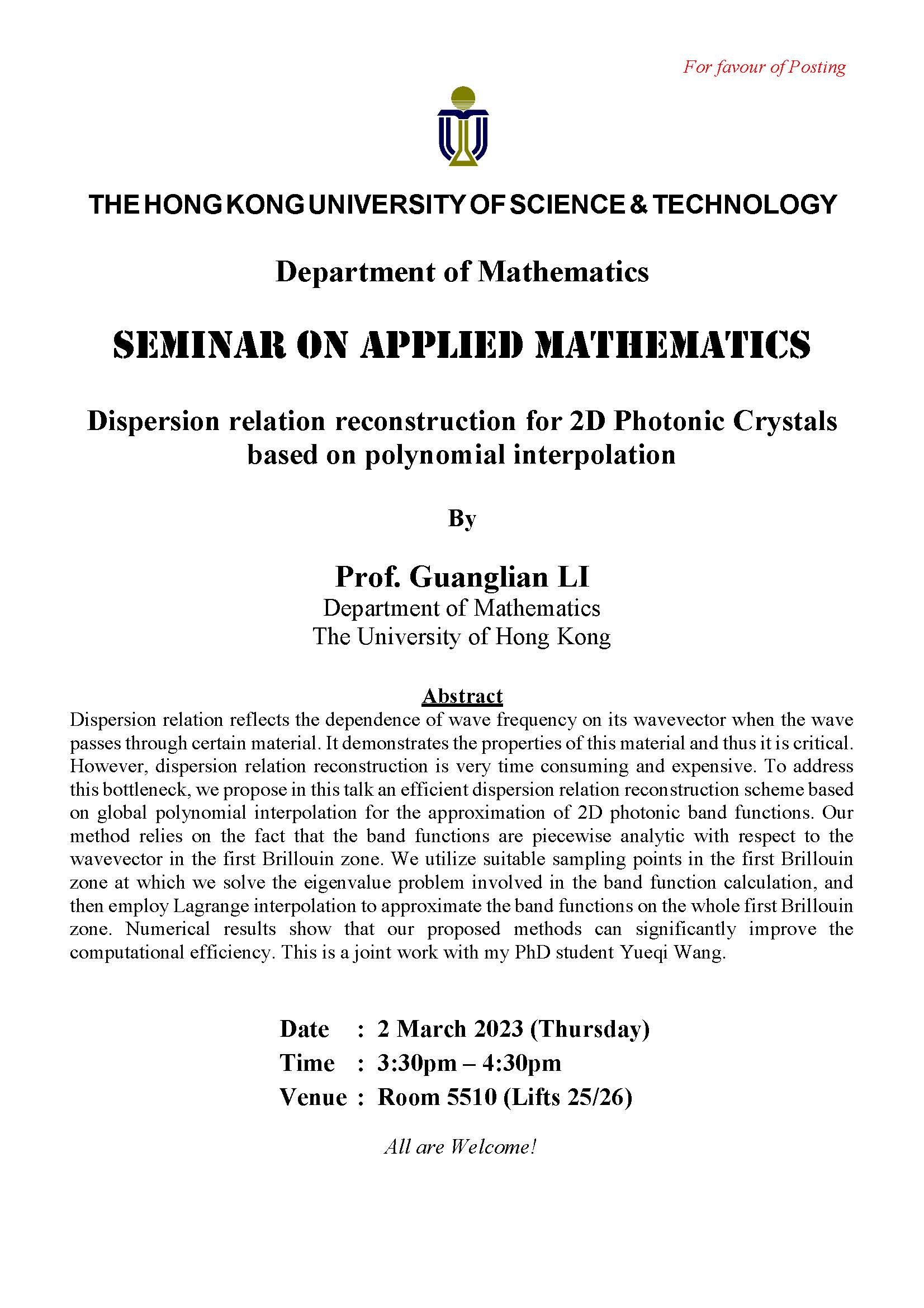Dispersion relation reflects the dependence of wave frequency on its wavevector when the wave passes through certain material. It demonstrates the properties of this material and thus it is critical. However, dispersion relation reconstruction is very time consuming and expensive. To address this bottleneck, we propose in this talk an efficient dispersion relation reconstruction scheme based on global polynomial interpolation for the approximation of 2D photonic band functions. Our method relies on the fact that the band functions are piecewise analytic with respect to the wavevector in the first Brillouin zone. We utilize suitable sampling points in the first Brillouin zone at which we solve the eigenvalue problem involved in the band function calculation, and then employ Lagrange interpolation to approximate the band functions on the whole first Brillouin zone. Numerical results show that our proposed methods can significantly improve the computational efficiency. This is a joint work with my PhD student Yueqi Wang.

Department of Mathematics, The University of Hong Kong



